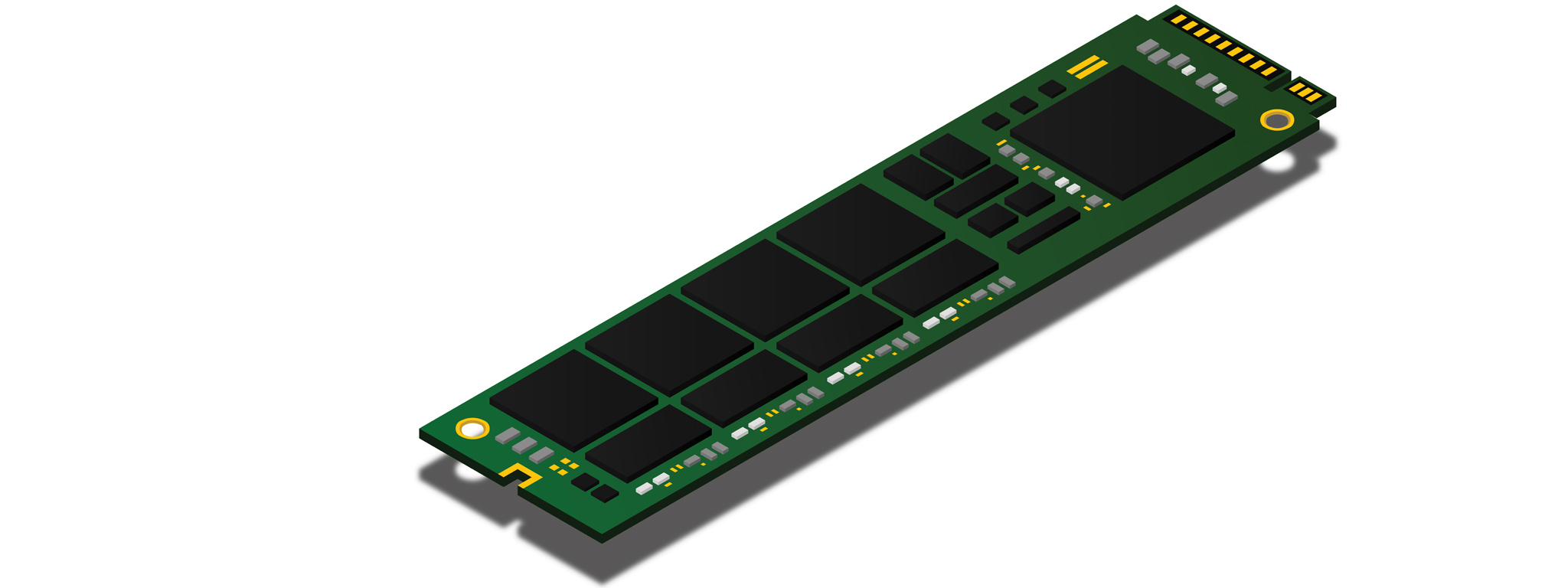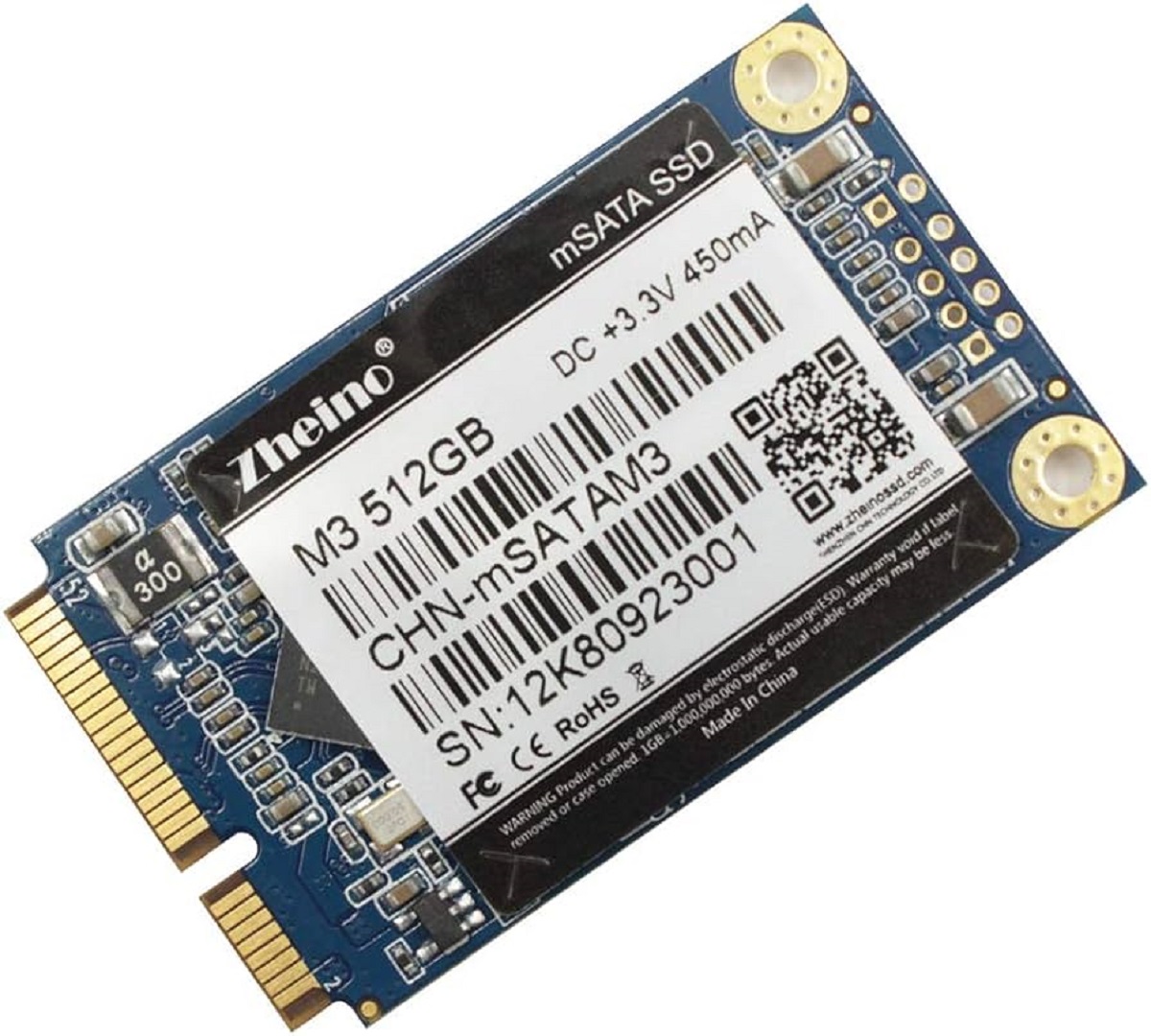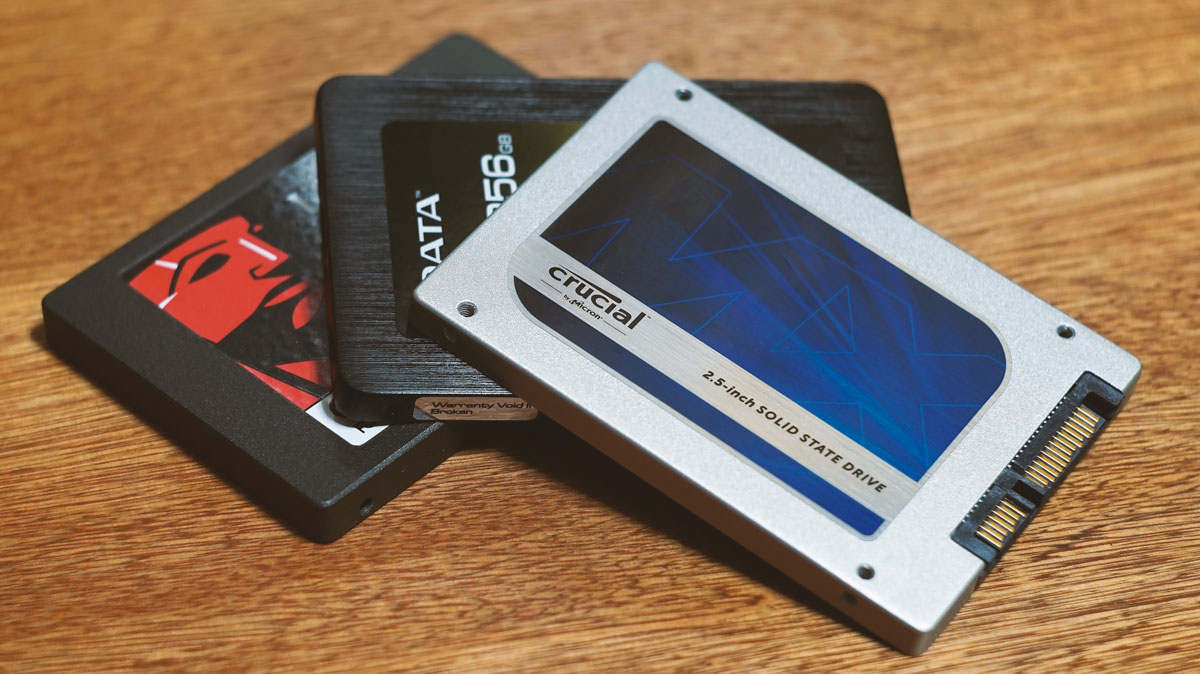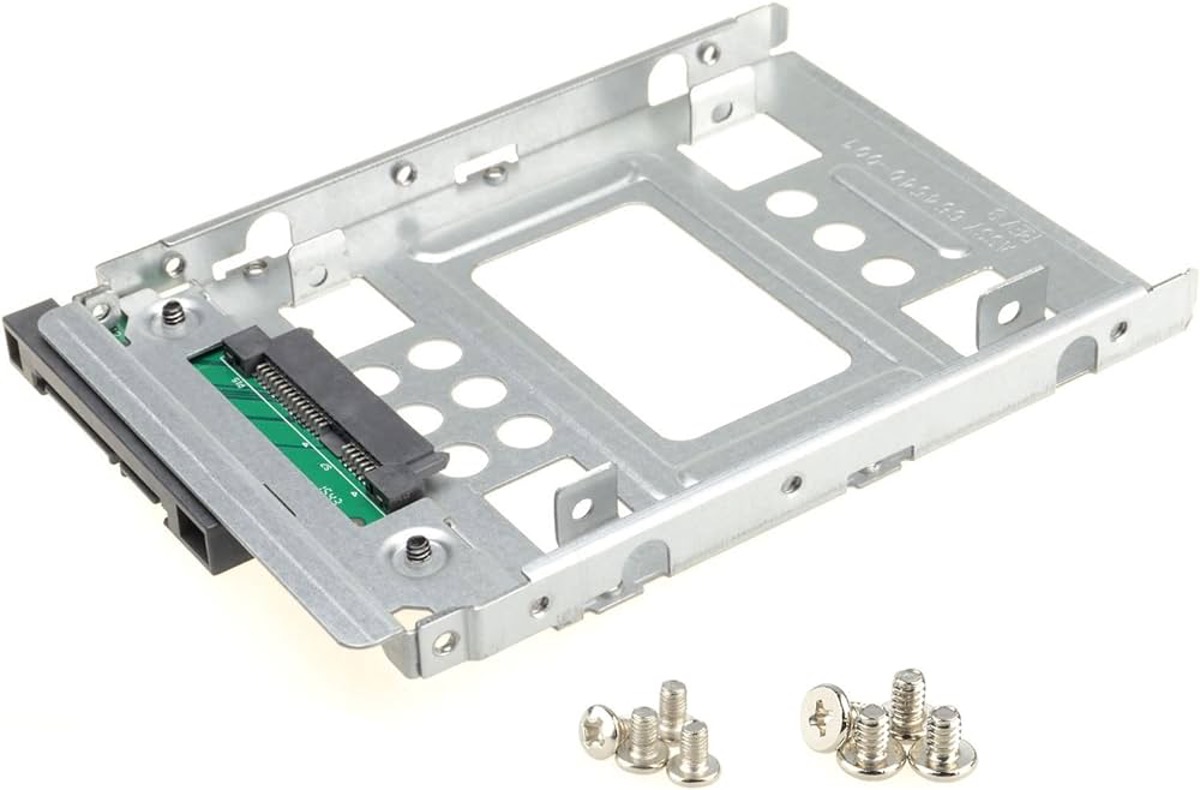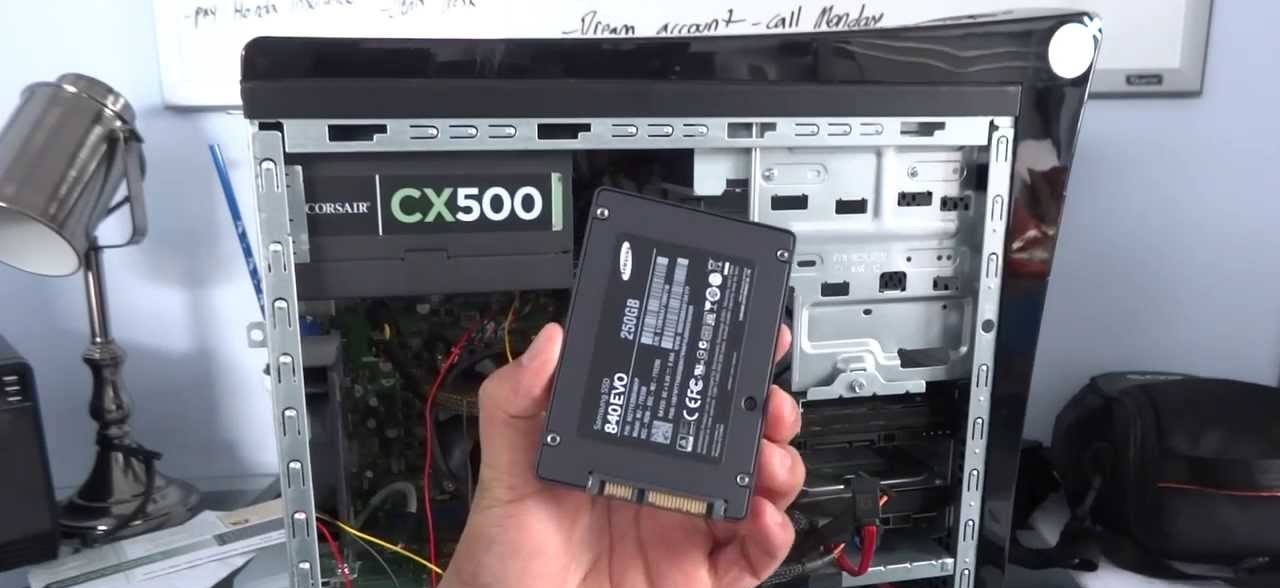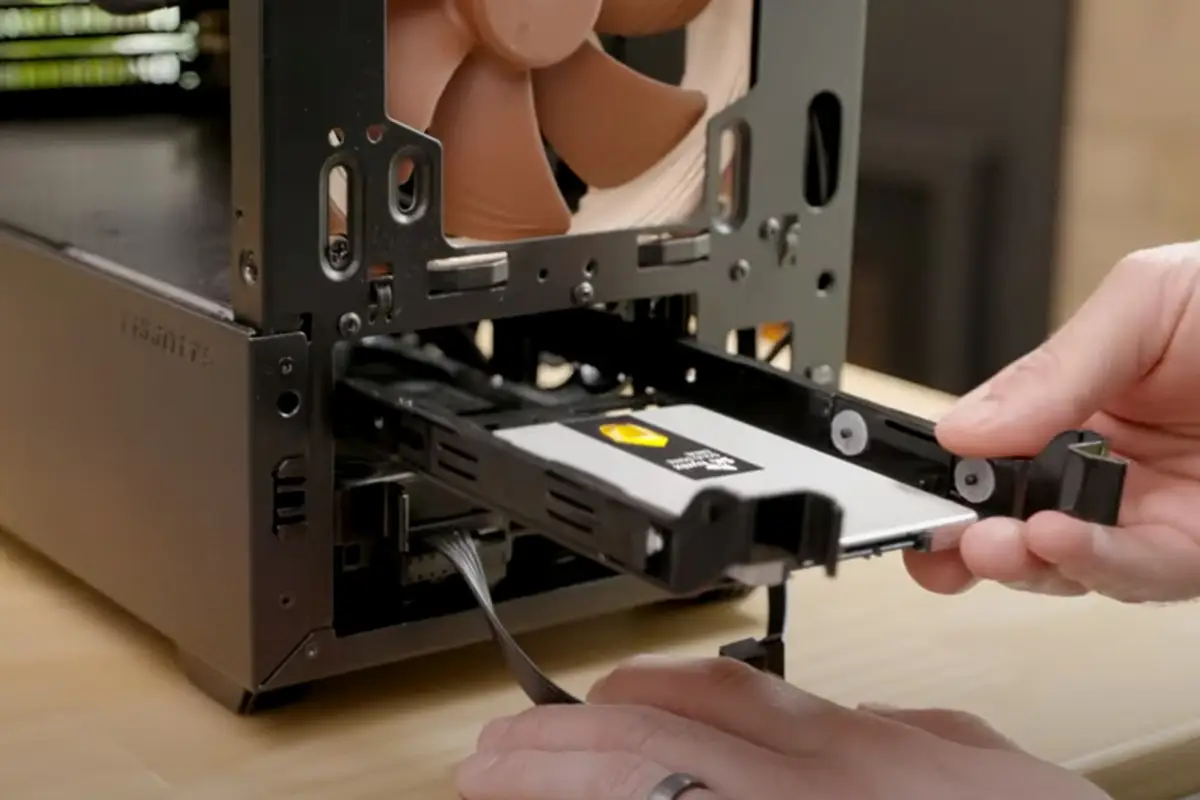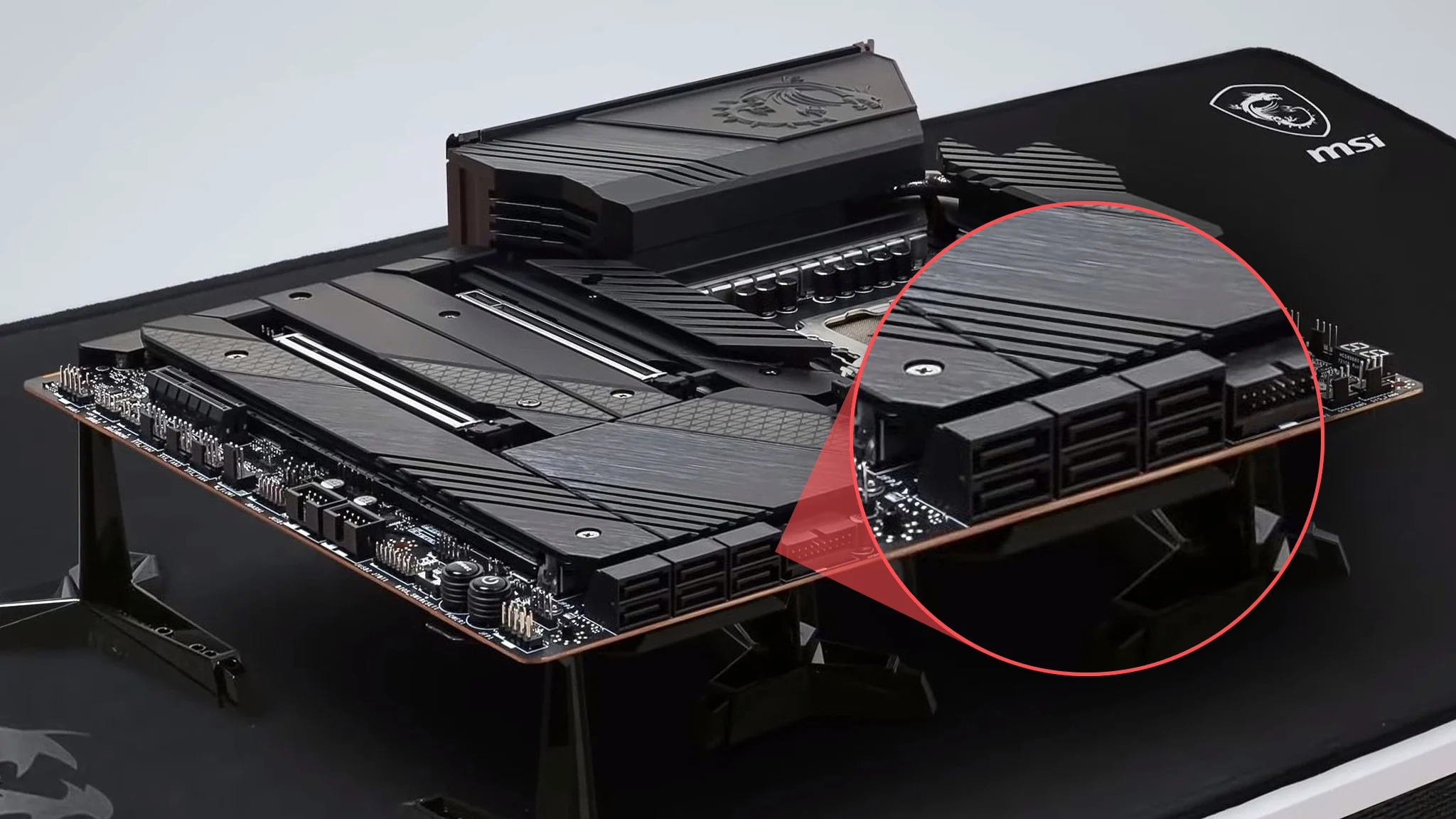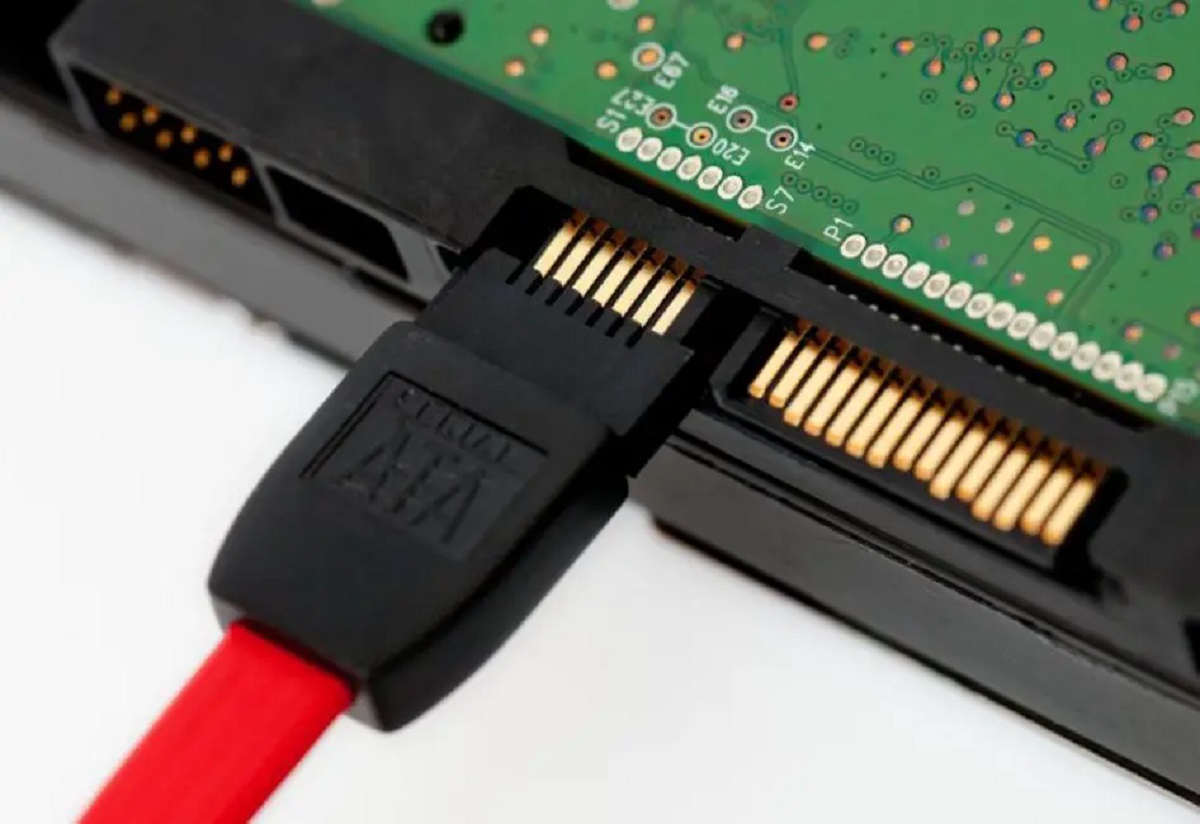Introduction
Welcome to the world of Solid State Drives (SSDs)! As technology continues to advance at a rapid pace, SSDs have emerged as the new standard for storage in both personal computers and data centers. With their lightning-fast speeds and superior reliability, SSDs have quickly gained popularity among tech enthusiasts and professionals alike.
In this article, we will delve into the world of SATA SSD drives and explore what exactly makes them such a game-changer in the realm of data storage. Whether you’re a seasoned computer enthusiast or a beginner looking to upgrade your system, understanding the basics of SATA SSDs is essential in making an informed decision.
But first, let’s quickly understand what Solid State Drives are. Unlike traditional Hard Disk Drives (HDDs) that rely on spinning disks and moving parts, SSDs are entirely electronic storage devices. They utilize flash memory technology to store data, resulting in incredible speed, lower power consumption, and enhanced durability.
Now, let’s explore what exactly SATA is, and why it plays a crucial role in the world of SSDs. SATA stands for Serial Advanced Technology Attachment, and it is a communication interface commonly used for connecting storage devices such as HDDs and SSDs to a computer’s motherboard. SATA has undergone several revisions over the years, with the latest being SATA III, which provides a bandwidth of up to 6 gigabits per second (Gbps).
SATA SSD drives have become the go-to choice for many users due to their exceptional performance and compatibility with existing systems. These drives offer several advantages over traditional HDDs, including faster data transfer speeds, lower latency, and reduced power consumption. Additionally, SATA SSD drives are highly reliable, with no moving parts that could potentially fail or become damaged.
As we dive deeper into this article, we will explore how SATA SSD drives differ from traditional HDDs, discuss their performance characteristics, and provide guidance on selecting the right drive for your needs. We will also cover the installation and setup process, as well as essential maintenance tips to ensure your SATA SSD drive continues to perform optimally.
So, if you’re ready to unleash the power of SSDs and take your storage capabilities to the next level, let’s begin our journey into the world of SATA SSD drives.
Understanding Solid State Drives (SSDs)
Solid State Drives (SSDs) have revolutionized the storage industry with their exceptional performance and reliability. Unlike traditional Hard Disk Drives (HDDs), which use spinning disks to store and retrieve data, SSDs utilize flash memory technology. This means that data is stored on interconnected memory chips, providing faster access times and improved overall performance.
One of the key advantages of SSDs is their incredible speed. Since there are no moving parts involved in data retrieval, SSDs can access and transfer data at lightning-fast speeds. This translates into significantly reduced system boot times, faster application load times, and a smoother overall computing experience.
SSDs also excel in random read and write operations, making them ideal for tasks that require frequent data access, such as gaming, video editing, and professional applications. Additionally, SSDs have low latency, meaning there is minimal delay between data requests and retrieval. This results in a more responsive system, especially when multitasking or running resource-intensive applications.
Besides speed, SSDs are known for their reliability. Traditional HDDs are vulnerable to mechanical failure due to their moving parts, but SSDs have no such limitations. Without any mechanical components, SSDs are more resistant to shocks, vibrations, and temperature fluctuations. This makes them an excellent choice for mobile devices such as laptops, where durability is crucial.
Another significant advantage of SSDs is their energy efficiency. SSDs consume less power compared to HDDs, resulting in longer battery life for laptops and reduced energy costs for desktop users. This is particularly beneficial for users who prioritize energy conservation and want to minimize their carbon footprint.
In terms of physical size, SSDs are generally smaller and lighter than traditional HDDs. This makes them perfect for compact devices like ultrabooks or small form factor PCs, where space is limited. The smaller form factor also enables SSDs to be used in a wide range of devices, including tablets, smartphones, and gaming consoles, further expanding their versatility.
While SSDs offer numerous benefits over traditional HDDs, it’s important to note that they do have some limitations. The main limitation is their comparatively higher cost per gigabyte of storage. SSDs are generally more expensive than HDDs, especially when it comes to higher capacity drives. However, as technology advances and demand increases, the cost of SSDs continues to decrease, making them increasingly accessible to a wider audience.
Now that we have a better understanding of what SSDs are and their advantages, let’s delve into the specifics of SATA SSD drives and why they are a popular choice for many users.
What is SATA?
SATA, which stands for Serial Advanced Technology Attachment, is a widely used communication interface for connecting storage devices, including Solid State Drives (SSDs), to a computer’s motherboard. It has become the de facto standard in the industry due to its simplicity, compatibility, and cost-effectiveness.
SATA was introduced as a replacement for the older IDE (Integrated Drive Electronics) interface, which used parallel communication. SATA, on the other hand, utilizes a serial communication method, allowing for faster and more efficient data transfer between the storage device and the computer.
SATA supports hot-swapping, which means that devices can be connected or disconnected from the system while it is powered on. This makes it easier to install or replace drives without having to restart the computer. It also supports advanced features such as Native Command Queuing (NCQ), which optimizes the order in which data is sent to and from the drive, enhancing overall performance.
There have been several revisions of the SATA interface over the years. The most commonly used version is SATA III, also known as SATA 6Gb/s. This version provides a maximum bandwidth of 6 gigabits per second (Gbps), allowing for faster data transfer rates and improved system responsiveness.
SATA III connectors are typically found on modern motherboards and allow for backward compatibility with previous SATA versions. This means that SATA III drives can be used with older SATA interfaces, albeit at a lower speed. However, it’s important to note that using a drive with a higher SATA version on a lower SATA interface will result in reduced performance.
When it comes to SATA SSDs, the interface plays a crucial role in ensuring optimal performance. The SATA III interface is capable of delivering the full potential of SSDs, allowing them to achieve their maximum data transfer speeds. However, it’s worth noting that as SSD technology continues to evolve, newer interfaces such as PCIe (Peripheral Component Interconnect Express) are emerging to provide even faster speeds.
Overall, SATA is a reliable and efficient interface that has played a significant role in the widespread adoption of SSDs. Its compatibility with existing systems, cost-effectiveness, and ease of use have made it a popular choice among users looking to upgrade their storage capabilities.
Now that we have a good understanding of SATA, let’s explore the advantages of using SATA SSD drives and how they differ from traditional Hard Disk Drives (HDDs).
Advantages of SATA SSD Drives
SATA SSD (Solid State Drive) drives offer numerous advantages over traditional Hard Disk Drives (HDDs), making them a popular choice for consumers and professionals alike. Let’s explore some of the key advantages of SATA SSD drives.
1. Enhanced Speed: One of the most significant advantages of SATA SSD drives is their exceptional speed. Unlike HDDs, which rely on spinning disks and mechanical components, SSDs have no moving parts. This allows them to access and transfer data at lightning-fast speeds, resulting in reduced system boot times, faster application load times, and improved overall system responsiveness.
2. Low Latency: SATA SSD drives have extremely low latency, meaning there is minimal delay between data requests and retrieval. This results in a more responsive system, especially when multitasking or running resource-intensive tasks. Whether you’re gaming, video editing, or working with large datasets, the low latency of SATA SSD drives ensures a smooth and lag-free experience.
3. Improved Reliability: Traditional HDDs are prone to mechanical failure due to their moving parts. In contrast, SSDs have no mechanical components, making them more resistant to shocks, vibrations, and temperature fluctuations. This enhanced durability makes SATA SSD drives a reliable storage solution, ensuring your valuable data remains safe and accessible.
4. Lower Power Consumption: SATA SSD drives consume significantly less power compared to HDDs. This not only translates to longer battery life for laptops but also reduces energy costs for desktop users. Using SATA SSD drives allows for a more energy-efficient system, contributing to environmental sustainability and cost savings.
5. Noiseless Operation: With no moving parts, SATA SSD drives operate silently. Unlike HDDs that generate noise when the disks spin and the read/write heads move, SATA SSD drives provide a noiseless computing experience. This is particularly beneficial for those who require a quiet environment, whether it’s for focused work or entertainment purposes.
6. Compact Form Factor: SATA SSD drives are generally smaller and lighter than traditional HDDs. This makes them ideal for devices that prioritize portability and have limited space, such as ultrabooks, compact desktops, and portable external drives. The small form factor of SATA SSD drives allows for maximum storage capacity without compromising on size or weight.
7. Compatibility: SATA SSD drives are compatible with most modern systems, owing to the widespread adoption of the SATA interface. They can easily be installed in both desktops and laptops, providing a seamless upgrade option for those looking to boost their storage performance. Additionally, SATA SSD drives are compatible with various operating systems, including Windows, macOS, and Linux.
8. Scalability: SATA SSD drives offer a wide range of storage capacities, providing flexibility for different user needs. Whether you require a small-sized drive for basic system operations or a high-capacity drive for storing multimedia files, SATA SSD drives offer various options to accommodate your storage requirements.
With these distinct advantages, it’s easy to see why SATA SSD drives have become the go-to choice for users seeking high-performance, reliable, and energy-efficient storage solutions. In the following sections, we will explore further differences between SSDs and HDDs and delve into the performance aspects of SATA SSD drives.
How SSDs differ from traditional Hard Disk Drives (HDDs)
Solid State Drives (SSDs) and traditional Hard Disk Drives (HDDs) are fundamentally different in terms of their technology and design. Understanding these differences can help you make an informed decision when choosing between the two for your storage needs. Let’s explore how SSDs differ from HDDs.
1. Technology: The main difference between SSDs and HDDs lies in the technology used to store and retrieve data. HDDs consist of spinning magnetic disks, or platters, which are read and written on by mechanical arms with read/write heads. In contrast, SSDs use flash memory technology, which stores data electronically on microchips. This key distinction contributes to several performance differences between the two.
2. Speed: One of the most significant advantages of SSDs over HDDs is their speed. HDDs have mechanical components that require physical movement, resulting in slower data access times. On the other hand, SSDs have no moving parts, allowing for near-instantaneous access to data. This leads to faster boot times, quicker application load times, and overall improved system responsiveness.
3. Reliability: Due to the lack of mechanical components, SSDs are generally more reliable than HDDs. HDDs are prone to mechanical failures, such as head crashes or motor failures, which can result in data loss. SSDs, being solid-state devices, are more resistant to physical shocks, vibrations, and temperature fluctuations, making them less likely to suffer from mechanical failures.
4. Energy Efficiency: SSDs are more energy-efficient than HDDs. Since SSDs have no moving parts, they consume less power to operate. This not only results in longer battery life for laptops but also reduces energy costs for desktop users. Additionally, the reduced power consumption of SSDs contributes to a cooler operating temperature, which can help prolong the lifespan of other system components.
5. Noise: HDDs generate noise due to the spinning of the disks and the movements of the read/write heads. In contrast, SSDs operate silently because they have no moving parts. This makes SSDs a preferred choice for those who require a quiet computing environment, whether it’s for focused work, multimedia activities, or simply a noiseless user experience.
6. Form Factor and Portability: HDDs are typically larger and heavier than SSDs. SSDs, being solid-state devices, have a compact form factor, allowing for more flexibility in terms of device design and portability. This makes SSDs an excellent choice for small form factor devices such as ultrabooks, tablets, and external drives, where size and weight are important considerations.
7. Cost: HDDs are generally more cost-effective in terms of price per gigabyte of storage compared to SSDs. However, SSD prices have been steadily decreasing over the years as the technology becomes more mainstream. While SSDs may still have a higher upfront cost, the overall cost per performance and reliability ratio is becoming more favorable, making them an increasingly viable option for many users.
By understanding the differences between SSDs and HDDs, you can make an informed decision based on your specific needs and priorities. SSDs excel in speed, reliability, energy efficiency, and noiseless operation, while HDDs offer cost-effective storage options and larger storage capacities. In the following sections, we will explore the performance aspects and considerations when choosing a SATA SSD drive.
SATA SSD Drive Performance
SATA SSD (Solid State Drive) drives offer impressive performance improvements compared to traditional Hard Disk Drives (HDDs). They leverage the speed and efficiency of flash memory technology to deliver a seamless computing experience. Let’s explore the key performance aspects of SATA SSD drives.
1. Data Transfer Speed: One of the primary advantages of SATA SSD drives is their exceptional data transfer speed. SATA III SSD drives can achieve read and write speeds of up to 6 gigabits per second (Gbps), allowing for near-instantaneous access to data. This translates into faster boot times, quicker application launches, and smoother overall system performance.
2. Random Access Time: SATA SSD drives excel in random access time, which refers to the time it takes to access data stored in different locations on the drive. Unlike HDDs that rely on the physical movement of read/write heads, which can result in significant delays, SSDs have no mechanical components. This allows for near-zero latency and significantly improves system responsiveness, making operations like file searches, multitasking, and caching much faster.
3. Input/Output Operations per Second (IOPS): SATA SSD drives exhibit impressive IOPS performance, which measures the number of input and output operations the drive can handle per second. SSDs can handle a much higher number of IOPS compared to HDDs, resulting in faster response times when dealing with multiple concurrent operations. This is particularly beneficial for tasks that involve heavy multitasking, database operations, or running multiple virtual machines.
4. Sequential and Burst Performance: SATA SSD drives deliver excellent sequential read and write speeds, allowing for fast data transfer during large file operations such as copying, transferring, or streaming media. The burst performance of SATA SSD drives is particularly noteworthy. Burst performance refers to the ability of the drive to maintain high-speed data transfers for short durations. SSDs can sustain high burst speeds, even when handling large volumes of data simultaneously, ensuring smooth and uninterrupted performance.
5. Endurance and Longevity: SATA SSD drives have a limited number of write cycles before they reach their maximum lifespan. However, modern SSDs are designed with sophisticated wear-leveling algorithms and advanced NAND flash memory technology to optimize performance and extend the drive’s lifespan. This ensures long-term reliability and durability, making SATA SSD drives suitable for both consumer and professional applications.
6. Compatibility: SATA SSD drives are compatible with most modern systems, thanks to the widespread adoption of the SATA interface. They can easily be installed in desktops, laptops, and other devices that support the SATA connectivity standard. Additionally, SATA SSD drives are supported by various operating systems, including Windows, macOS, and Linux.
7. Performance Consistency: A notable advantage of SATA SSD drives is their consistent performance over time. Unlike HDDs, which can experience degradation in performance as they age, SSDs maintain their speed and responsiveness throughout their lifespan. This ensures that your system remains fast and efficient, even after prolonged use.
Overall, SATA SSD drives offer significant performance improvements over traditional HDDs in terms of data transfer speed, random access time, IOPS, sequential and burst performance, endurance, longevity, compatibility, and performance consistency. These advantages make SATA SSD drives an excellent choice for users seeking enhanced system performance, faster data access, and a more seamless computing experience.
Choosing the Right SATA SSD Drive
Choosing the right SATA SSD (Solid State Drive) drive can greatly impact your system’s performance and storage capabilities. With numerous options available in the market, it’s important to consider several factors to ensure you make the best choice for your specific needs. Let’s explore some key considerations when choosing a SATA SSD drive.
1. Capacity: Determine the storage capacity that suits your requirements. SATA SSD drives are available in a wide range of sizes, from smaller capacities like 120GB or 250GB for basic system operations to larger capacities like 1TB or 2TB for storing large amounts of multimedia files or running resource-intensive applications. Consider the amount of data you need to store and the future expansion needs of your system.
2. Performance: Consider the performance specifications of the SATA SSD drive. Look at factors such as read and write speeds, random access time, and input/output operations per second (IOPS). If you require fast data transfers, multitasking capabilities, or handling demanding workloads, opt for a drive with higher performance numbers to ensure optimal performance.
3. Endurance: Pay attention to the endurance rating of the SATA SSD drive, which indicates the number of program/erase (P/E) cycles the drive can handle before reaching its maximum lifespan. Higher endurance drives are recommended for heavy write-intensive workloads, such as video editing or data analysis. For general consumer use, a drive with average endurance should suffice.
4. Reliability and Warranty: Consider the reliability and warranty provided by the manufacturer. Look for SATA SSD drives from reputable manufacturers known for their quality and reliability. Check the warranty period offered by the manufacturer, as it can vary from drive to drive. A longer warranty period indicates the manufacturer’s confidence in the drive’s reliability and performance.
5. Price: Compare prices of SATA SSD drives based on their capacity and performance. While SSDs are generally more expensive than traditional HDDs, the overall cost has decreased over the years. Consider your budget and prioritize the features and performance that are most important to you. Remember to weigh the cost against the performance benefits and long-term reliability of the drive.
6. Compatibility: Ensure compatibility with your system. Check the specifications of your motherboard or device to ensure that it supports SATA III (6 Gbps) or the specific SATA version of the SSD drive you’re considering. Note that SATA drives are also backward compatible with older SATA versions, but the performance may be limited by the interface.
7. User Reviews: Read user reviews and feedback to get an idea of the real-world performance and reliability of the SSD drive you’re considering. Online forums, review websites, and customer testimonials can provide valuable insights from actual users and help you make an informed decision.
By considering these factors, you’ll be able to choose the right SATA SSD drive that aligns with your storage needs, performance requirements, and budget. It’s essential to strike a balance between capacity, performance, endurance, reliability, and price to ensure you get the best possible SSD drive for your system.
SATA SSD Drive Installation and Setup
Installing and setting up a SATA SSD (Solid State Drive) drive is a straightforward process that can greatly enhance your system’s performance and storage capabilities. Whether you’re upgrading your existing system or building a new one, here are the essential steps to install and set up a SATA SSD drive.
1. Prepare Your System: Before installing the SATA SSD drive, ensure that your system is turned off and unplugged from the power source. Take necessary precautions like wearing an anti-static wristband or regularly grounding yourself to prevent any damage to the drive during installation.
2. Identify an Available SATA Port: Identify an available SATA port on your motherboard for connecting the SATA SSD drive. Most modern motherboards have multiple SATA ports labeled accordingly. Choose an empty port that supports the SATA version of your SSD drive (e.g., SATA III for SATA III drives).
3. Mount the SATA SSD Drive: Secure the SATA SSD drive in an available drive bay, either on the front or back of the case, depending on your computer’s design. Use the appropriate screws or brackets to secure the drive in place. Make sure the connectors on the drive align with the ports on your system.
4. Connect the SATA Data Cable: Connect one end of a SATA data cable to the SATA port on the motherboard and the other end to the corresponding SATA connector on the SSD drive. Ensure a secure connection by pushing the connector in firmly but gently. Avoid applying excessive force that could damage the connectors or the motherboard.
5. Connect the SATA Power Cable: Connect a SATA power cable from the power supply to the power connector on the SATA SSD drive. SATA power cables generally have L-shaped connectors, making it easier to identify the correct orientation for insertion.
6. Secure and Organize Cables: Ensure that the cables are neatly organized and secured using cable ties or cable management solutions. This helps improve airflow inside the case, maintaining proper cooling for the SSD drive and other components.
7. Power On and Access BIOS/UEFI Settings: Power on your system and access the BIOS/UEFI settings by pressing the designated key (e.g., Del, F2, F10) during the boot process. Enter the BIOS/UEFI settings and navigate to the boot order or storage configuration section.
8. Set the SATA SSD Drive as Boot Device: In the BIOS/UEFI settings, set the SATA SSD drive as the boot device by moving it to the top of the boot order. This ensures that the system boots from the SATA SSD drive, maximizing its performance benefits. Save the changes and exit the BIOS/UEFI settings.
9. Install or Migrate Operating System: If you’re installing a new SATA SSD drive, you can proceed with installing the operating system of your choice. Follow the on-screen prompts and select the SATA SSD drive as the destination for the operating system installation.
10. Format and Initialize the SATA SSD Drive: If you’re using a previously used or second-hand SATA SSD drive, you may need to format and initialize it. This can be done through the Disk Management utility on Windows or Disk Utility on macOS. Follow the instructions to format and create a new volume on the SATA SSD drive.
With these steps, you can successfully install and set up a SATA SSD drive in your system. Enjoy the enhanced performance, faster boot times, and improved data access that come with utilizing an SSD drive.
Maintaining and Optimizing SATA SSD Drive
Maintaining and optimizing your SATA SSD (Solid State Drive) drive is essential to ensure its longevity, performance, and reliability. By following some best practices, you can keep your SATA SSD drive running smoothly and optimize its performance. Here are some tips to help you maintain and optimize your SATA SSD drive:
1. Keep Your SATA SSD Drive Firmware Up to Date: Periodically check for firmware updates from the manufacturer’s website and install them. Firmware updates often include bug fixes, performance improvements, and enhanced compatibility with the latest technology.
2. Enable TRIM Support: Ensure that TRIM support is enabled on your operating system. TRIM is a feature that helps optimize the performance and endurance of SSD drives by allowing the operating system to inform the drive about blocks of data that are no longer in use. TRIM enables faster write speeds and extends the lifespan of the SSD drive.
3. Avoid Defragmentation: Do not defragment your SATA SSD drive. Unlike traditional hard drives, solid-state drives do not benefit from defragmentation and, in fact, excessive defragmentation can wear out the drive faster by unnecessarily writing to all its cells. Modern operating systems automatically disable defragmentation for solid-state drives.
4. Monitor Drive Health: Regularly monitor the health of your SATA SSD drive using SMART (Self-Monitoring, Analysis, and Reporting Technology) tools. These tools provide valuable information about the drive’s health, including data such as temperature, wear-leveling count, and remaining lifespan. This will help you identify any potential issues early on and take necessary actions.
5. Avoid Full Capacity Utilization: Avoid using the SATA SSD drive at full capacity. Full drives can lead to performance degradation. Aim to keep around 10-20% of the drive’s capacity free to maintain optimal performance and allow the drive’s internal garbage collection and wear-leveling algorithms to work effectively.
6. Backup Your Data: Regularly back up your data to an external drive or cloud storage service. While SATA SSD drives are generally reliable, unforeseen circumstances such as physical damage or accidental deletion can still result in data loss. Having a backup ensures that your important files are protected and can be easily recovered.
7. Minimize Unnecessary Write Operations: Reduce unnecessary write operations on your SATA SSD drive. Actions such as excessive downloading, frequent software installations, or running unnecessary background processes can contribute to unnecessary wear and potentially degrade performance over time. Be mindful of your disk activity and optimize your usage accordingly.
8. Avoid Extreme Temperatures: Keep your SATA SSD drive within the recommended temperature range specified by the manufacturer. SSDs are sensitive to temperature extremes, and exposure to excessive heat or cold can affect their performance and lifespan. Ensure proper ventilation and cooling in your system to maintain a stable operating temperature for the drive.
9. Perform Regular System Maintenance: Regularly perform system maintenance tasks such as disk cleanup and removing unnecessary files to free up storage space. This helps in preventing excessive writes to the SSD drive and keeps it clutter-free, ensuring optimal performance.
10. Use Reliable Power Supply: Ensure your system is connected to a reliable power supply. Abrupt power loss or fluctuations can potentially damage the SATA SSD drive or corrupt data. Use a good quality uninterruptible power supply (UPS) or surge protector to safeguard against power surges and outages.
By following these maintenance and optimization tips, you can maximize the lifespan and performance of your SATA SSD drive. Regularly monitoring the drive’s health, keeping firmware up to date, enabling TRIM support, and practicing good usage habits will help ensure that your SATA SSD drive operates optimally for years to come.
Conclusion
SATA SSD (Solid State Drive) drives have revolutionized the storage industry, providing exceptional speed, reliability, and efficiency. In this article, we explored the world of SATA SSD drives and highlighted their advantages over traditional Hard Disk Drives (HDDs).
We began by understanding the basics of SSDs, including their technology and how they differ from HDDs. We then delved into the specifics of SATA and its role as a communication interface for connecting storage devices to a computer’s motherboard.
We explored the advantages of SATA SSD drives, including their enhanced speed, low latency, improved reliability, lower power consumption, noiseless operation, and compact form factor. These advantages make SATA SSD drives a popular choice for users seeking high-performance storage solutions.
We discussed the performance aspects of SATA SSD drives, including their data transfer speed, random access time, IOPS, sequential and burst performance, endurance, longevity, compatibility, and performance consistency. Understanding these performance factors is crucial in making an informed decision when choosing a SATA SSD drive.
We then highlighted the steps involved in installing and setting up a SATA SSD drive, covering the process from system preparation to BIOS/UEFI settings configuration.
To ensure optimal performance and longevity, we provided maintenance and optimization tips for SATA SSD drives. These tips included keeping firmware up to date, enabling TRIM support, avoiding defragmentation, monitoring drive health, avoiding full capacity utilization, performing regular backups, minimizing unnecessary write operations, managing temperature, regular system maintenance, and using a reliable power supply.
In conclusion, SATA SSD drives offer an unparalleled combination of speed, reliability, and efficiency for storage solutions. With their exceptional performance and numerous advantages over traditional HDDs, SATA SSD drives have become the preferred choice for users seeking high-performance storage. By implementing proper installation, maintenance, and optimization practices, you can ensure that your SATA SSD drive operates at peak performance for years to come, enhancing your computing experience and storing your valuable data securely.







